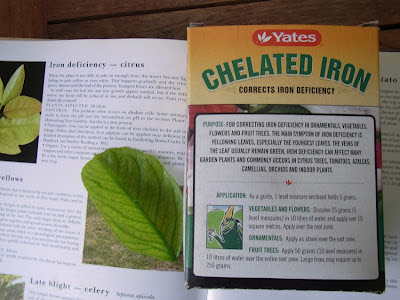Well, I didn't expect to see this sight when I wandered out the back door this morning. Louisiana iris in bloom! So early – they were just furled blue flags only yesterday and already they're fully out, gorgeous big blue and yellow carnivals of colour saying "hi y'all" to the world.
 |
| And there's a third one on the way, probably bursting out of its frock by early this afternoon. |
 |
| This blue is the classic Louisiana iris, and this cultivar is called 'Gulf Shores'. |
 |
| One little-known fact about Louisiana iris is that Australian breeders have become so successful at developing new colours that we are now exporting Louisiana iris to other countries, including the USA! |
 |
| I wondered what Paul's view of the iris would be, and I think it's something like this. Very pleasant! |
The other good news about Louisiana iris is that they're easy enough to grow. They're a pond plant, either in the pond in a pot, or by the edge of a natural pond in a damp spot. Mine's in a pot stuffed with cow poo and compost and it grows and spreads vigorously. Though this is just a guess, I suspect it'd spread like mad if it liked the spot it was planted in the ground pondside.
A lovely woman who's an iris-growing specialist told me at a garden show that Lousiana iris are "the teenage boys of the plant world – it's almost impossible to over-feed them" and so I've been diligent about keeping up the supply of slow-release fertiliser to them. I use slow-release pellets for azaleas, camellias and rhododendrons, as the iris like soils and life in general to have an acid tinge, as do azaleas etc. Not sure if it's the right food for them, but it seems to work OK.




















































